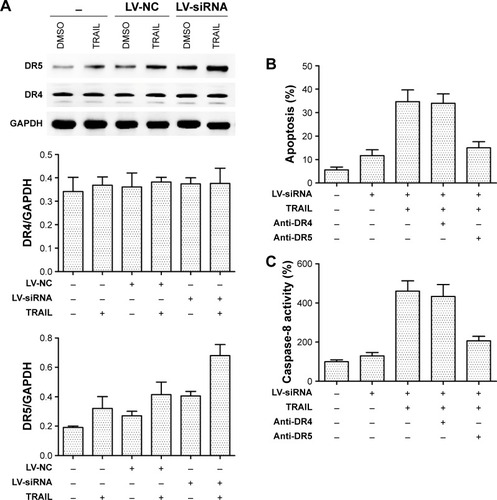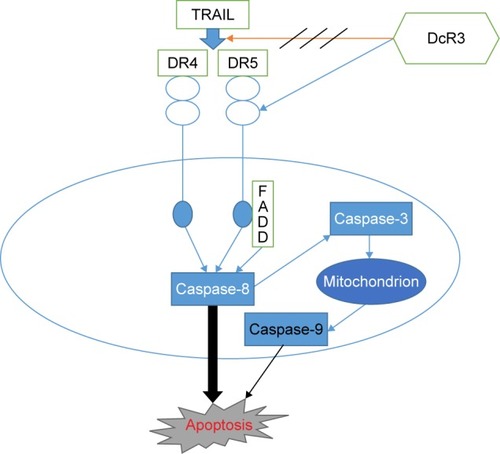Figures & data
Figure 1 Expression of DcR3 in hepatocellular carcinoma cell lines and sensitivity to TRAIL for HepG2 and BEL-7402.
Abbreviations: DcR, decoy receptor; ELISA, enzyme-linked immunosorbent assay; qPCR, quantitative polymerase chain reaction; SD, standard deviation; TRAIL, tumor-necrosis factor-related apoptosis-inducing ligand; DMSO, dimethyl sulfoxide.
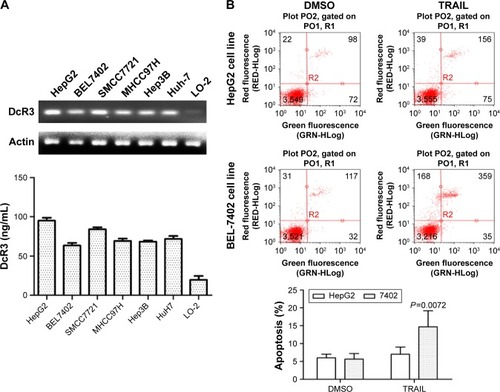
Figure 2 Expression of DcR3 and apoptosis in hepatocellular carcinoma cell lines with different treatments.
Abbreviations: DcR, decoy receptor; ELISA, enzyme-linked immunosorbent assay; qPCR, quantitative polymerase chain reaction; SD, standard deviation; TRAIL, tumor-necrosis factor-related apoptosis-inducing ligand; DMSO, dimethyl sulfoxide.
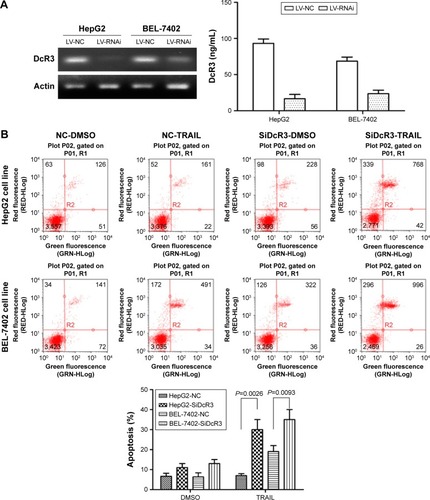
Figure 3 Effect of TRAIL on cell viability and cell cycle.
Abbreviations: CCK8, cell counting kit 8; CV, variable coefficient; TRAIL, tumor necrosis factor-related apoptosis-inducing ligand; DMSO, dimethyl sulfoxide.

Figure 4 SiDcR3-combined TRAIL activated extrinsic and intrinsic apoptotic signaling pathways.
Abbreviations: DcR, decoy receptor; h, hours; TRAIL, tumor necrosis factor-related apoptosis-inducing ligand.
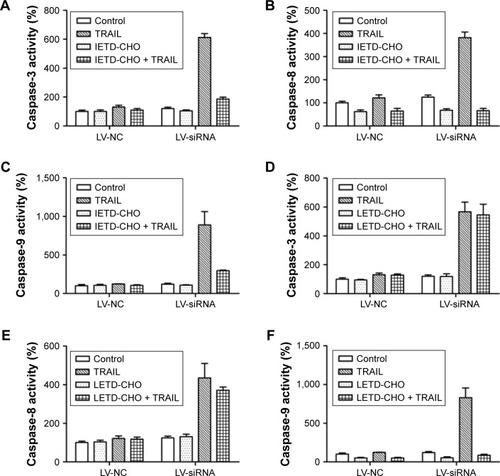
Figure 5 SiDcR3 sensitizes hepatocellular carcinoma cells through Bcl-2 family members.
Abbreviations: DcR, decoy receptor; h, hours; SD, standard deviation; CV, variable coefficient; TRAIL, tumor necrosis factor-related apoptosis-inducing ligand.
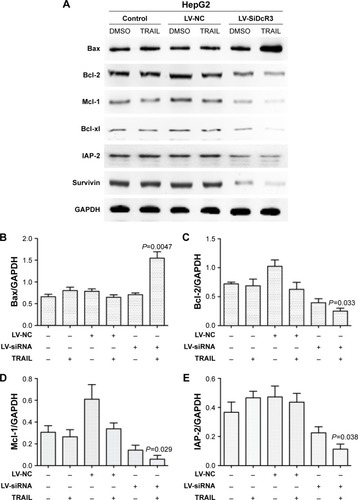
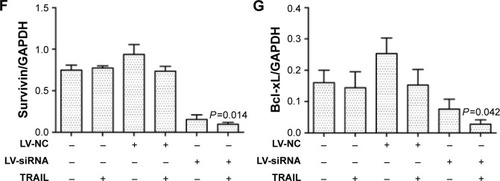
Figure 6 Silencing DcR3 combined TRAIL (100 ng/mL) can increase the expression of DR5.
Abbreviations: DcR, decoy receptor; h, hours; PI, propidium iodide; SD, standard deviation; TRAIL, tumor necrosis factor-related apoptosis-inducing ligand.
